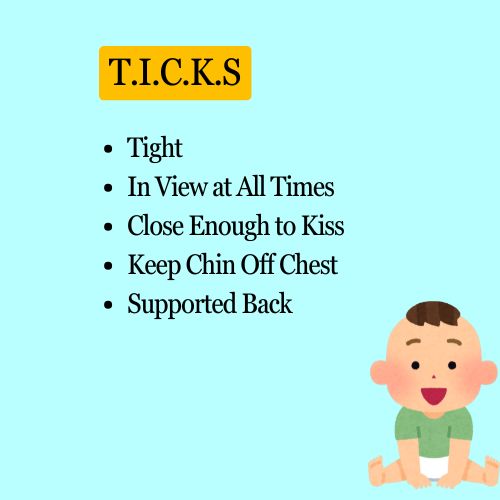Hi, I’m Jane Doe , the founder of Baby Bloom Land. As a mom myself, I can’t tell you enough about the joy and ease babywearing brings. Babywearing isn’t just a trend; it’s a beautiful, practical way to keep your little one close while you go about your day. More and more parents are discovering this excellent practice, and it’s easy to see why.
With a suitable carrier, babywearing can make those early days (and nights!) much easier. From soothing a fussy newborn to keeping your hands free for coffee, it’s like having an extra set of gentle, comforting hands. And it’s not just about convenience—it’s also a powerful bonding tool.
Benefits of Babywearing
1. Bonding with Your Baby
One of the most magical parts of babywearing is the closeness it creates. There’s something so special about having your baby snuggled against you, hearing your heartbeat, and feeling your warmth. This physical closeness isn’t just comforting for your baby—it’s also a powerful way to build a deep bond. With every gentle sway, your baby feels secure and loved, which every new parent cherishes.
2. Supporting Postpartum Recovery
Babywearing has benefits beyond bonding—it can also be incredibly supportive during postpartum recovery. For many parents, carrying their baby helps their body heal by providing light, gentle activity that strengthens core muscles without strain. Plus, this close connection can help reduce stress and support mental well-being when emotional balance can be challenging.
3. Hands-Free Parenting
Let’s face it: being a new parent means juggling a lot! Babywearing is a beautiful way to go hands-free while keeping your baby close. Whether preparing a quick meal, responding to emails, or simply taking a moment for yourself, a suitable carrier can help you balance caregiving with other tasks. Babywearing allows you to be both hands-on and hands-free, all while keeping your baby in a warm, safe embrace.
This approach adds a personal touch that lets readers feel your connection to babywearing and your commitment to helping them on their journey.
For detailed information read on our guides on Baby Carriers
Choosing the Best Baby Carrier for First-Time Parents
As a first-time parent, picking a suitable baby carrier can feel overwhelming with all the choices. I remember being in your shoes, wanting something safe, comfortable, and easy to use. So, let’s break it down!
Types of Baby Carriers
There are several popular types of carriers, each with its unique benefits:
- Wraps: These are long pieces of fabric you wrap around yourself and your baby. They’re great for newborns because they provide a snug, womb-like fit. Wraps are incredibly versatile but can take a little practice to master.
- Ring Slings: A ring sling is a piece of fabric with two rings sewn at one end, which you adjust for a perfect fit. It’s quick to put on and is a lifesaver when you want to wear your baby on your hip. Ring slings are often made of breathable fabric, perfect for warmer days.
- Soft-Structured Carriers (SSCs): SSCs come with padded straps and buckles, making them easier for on-the-go use. They’re designed to provide both parent and baby with ergonomic support. SSCs are excellent for extended wear; they’re comfortable and distribute weight well.
Each carrier type has its pros and cons. Wraps are wonderfully snug but may take a few tries to get right. Ring slings are quick and adjustable but might not be ideal for extended wear. SSCs provide excellent support but can feel a bit bulky.
Related Article: Do you need a baby carrier for each parent
Safety Tips for Choosing a Carrier
When choosing a carrier, keep safety at the forefront. Look for:
- Support: A carrier should securely support your baby’s back and neck.
- Adjustability: Select something that adjusts as your baby grows and fits comfortably to your body.
- Fabric Quality: Breathable, soft, and durable fabric is ideal, especially for sensitive baby skin.
Comfort for Both Parent and Baby
Ergonomics is key! A suitable carrier should support your baby’s natural hip position and protect your back and shoulders from strain. Many soft-structured carriers offer padded straps and lumbar support to help you comfortably wear your baby for more extended periods.
I know it can be intimidating initially, so here are some essentials to make your baby-wearing journey smoother!
Related Article: How long is it ok to have a baby in a carrier
How to Position Your Baby Safely
Always remember the TICKS rule for safe babywearing:
- Tight – The carrier should hold your baby snugly.
- In view – Always keep your baby’s face visible.
- Close enough to kiss – You should be able to kiss the top of their head.
- Keep chin off chest – This ensures clear airways.
- Supported back – The carrier should support your baby’s back in a natural position.
Step-by-Step Instructions
Each carrier is slightly different, so follow the specific instructions for your type. For wraps, start by positioning the center of the fabric at your chest, crossing the fabric behind you, and wrapping it around to secure your baby close to you. Soft-structured carriers are simpler—just buckle, tighten, and you’re ready to go!
Common Mistakes to Avoid
Many parents find babywearing more comfortable after a few adjustments. Common mistakes include:
- Incorrect Tightness: The carrier should be snug to prevent your baby from slumping, which can lead to discomfort.
- Misaligned Straps or Buckles: Properly align and tighten straps to distribute weight evenly.
- Poor Fabric Adjustment: For comfort, ensure that wraps or ring slings are evenly spread out across your shoulders and back.
Once you get comfortable with babywearing, it can feel like second nature. I hope this guide helps you find the perfect carrier and use it confidently—you’ve got this!
This friendly, personal touch can help guide new parents through the initial learning curve and make babywearing feel accessible and supportive.
Babywearing During the Early Months
There are a few special considerations regarding babywearing during those precious first months. I remember the early days with my little ones and how small and delicate they felt—babywearing was an incredible way to keep them close and secure while freeing up my hands. Here are some tips to make babywearing during the newborn phase as safe and comfortable as possible!
1. Special Considerations for Newborns
With newborns, it’s all about gentle support. For babies under three months, a soft and snug fit is key. Wraps and stretchy slings are often ideal because they can hold your baby close, giving them that cozy feeling of being back in the womb. Soft-structured carriers with infant inserts can also work well if you want something more structured.
One essential is head and neck support—newborns can’t hold their heads up yet, so you’ll want a carrier that provides full support for their little head and neck. Make sure your baby’s chin is always off their chest, as this position keeps their airways clear.
Related Article: Will a sling carrier support a preemie baby
2. Babywearing in Different Seasons
Keeping your baby comfortable while babywearing can change depending on the season. Choose carriers made of lightweight, breathable materials like cotton or mesh in warmer months to keep you and your baby cool. During colder months, fleece-lined or heavier fabric carriers add warmth, and you can always layer up with a baby-wearing-friendly coat.
In summer, dress your baby in light layers to prevent overheating. I found it helpful to dress them in a cozy onesie in winter and add a hat for warmth. Remember that the carrier adds an extra layer, so you might not need as many clothes as you’d think.
3. Additional Tips and Recommendations
As your baby grows, your baby-wearing style may shift. Many carriers are adjustable to grow with your baby, so look for ones with adaptable features to support different stages of development. For example, you might switch from a wrap or sling to a soft-structured carrier that better distributes weight as your baby grows.
4. Resources for Learning Babywearing Techniques
If you’re feeling unsure, there are fantastic resources to help you learn babywearing techniques. I recommend watching online videos, taking a local babywearing class, or joining a support group to connect with other parents. These resources can boost confidence, especially when you’re starting out.
5. Maintenance and Cleaning Tips
Finally, don’t forget to take care of your carrier to keep it safe and durable. Most carriers have specific cleaning instructions, so follow them carefully. Regularly check for signs of wear and tear, like loose stitching or frayed fabric, to ensure everything remains secure.
Babywearing is a gift, allowing you to keep your baby close and make those early months easier. I hope these tips help you embrace the experience with comfort and confidence!


